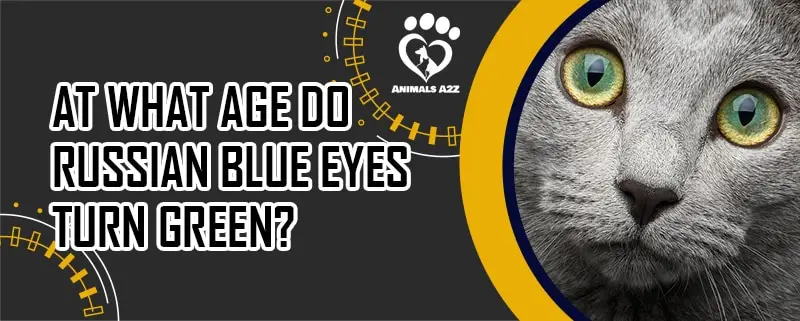Many people are attracted to the Russian Blue’s elegance, boasting a plush uniquely colored coat, green eyes, and smile. Russian Blue kittens are born with yellow eyes and eventually turn green as they age. The Russian Blue starts to develop green rings around their pupils at four months, where the initial yellow eyes turn into bright and vivid green.
Table of Contents
Origin
The Russian blue is a naturally occurring cat breed, meaning they have no single or “true” origin. However, many speculate they originate in northwest Russia, where a theory suggests they hail from the esteemed pets of the Russian nobles or czars.
Wherever they originated from, many people believe that Russian sailors befriended the cats around 1860 and welcomed them aboard their ships in Arkhangelsk’s port city. This unusual friendship may explain how the Russian Blue made its way to Great Britain and Northern Europe and why people sometimes call Russian Blue cats “Archangel Blues.”
Physical characteristics of Russian Blue cats
Unique and gorgeous fur
The most distinct feature of Russian blue cats is their beautiful fur that appears frosted with white specks of powdered sugar. Their coats are soft and silky and often leave marks behind when you pet their bodies until you smoothen them away.
Despite being delicate, their double coats are similar to those of a seal or beaver, meaning they’re rougher than they look. Russian Blue fur is also water-resistant and dense, protecting them from the harsh climates of their originating country, Russia.
Their blue coats with gorgeous silver tips give them a luminous appearance.
Emerald green eyes
In addition to their coat, another distinct feature of a Russian Blue cat is their brilliant emerald green eyes that remind you of Russia’s gorgeous forests. Their eyes are large, rounded, and far apart.
Russian Blue kittens are naturally born with yellow eyes, but eventually they become green as they age, usually when they reach four months.
Unique face structure
The Russian Blue has a unique facial structure. Their muzzle and upturned mouth make them appear to be smiling. And their wide and wedge-shaped head is similar in shape to that of a flared cobra.
Seven flat planes
A unique characteristic of a Russian Blue cat is the seven flat planes of their head. These include one from their nose to their brows, one from the brow to the back of their head, nose to the chin, and chin to neck. Then from the front of their heads, the Russian blue cat has over three flat planes starting from ear to ear, one on each side of their face to the muzzle and the base of their ears.
Muscular body
Russian Blue cats have naturally muscular bodies and usually have long legs to accompany their large stature. They have a long tail that is proportionate to their bodies.
Personality of a Russian Blue cat
Mild-mannered and attached cat
Russian Blue cats are naturally mellow and loyal felines that like to follow their owners everywhere and greet you at the door when you get home. They tend to attach themselves to one individual, but will still show affection to their entire family.
Sociable felines
Russian Blue cats are social felines that love to play with other animals and their human owners. However, they also like alone time and actively seek quiet secluded nooks to rest. A Russian Blue cat won’t mind if you leave it for long periods, but they require a lot of playtime.
Vocal cat
Russian Blues are vocal, and they’ll use their voice to communicate with their human owners whenever they want to eat and play. This feline will positively respond when you talk to it and give you regular back-and-forth.
However, Russian Blue cats don’t adapt well to change, like changing meal times or facing unknown individuals, and you can expect to hear about them disapproving of these situations.
Taking care of a Russian Blue cat
A Russian blue cat requires minimal grooming and healthcare when you maintain a good hygiene routine with them. They generally have good teeth, and you can keep their pearly whites in their best condition by brushing them at least twice a week and combing their coats the same number of times.
The only concern you may have when taking care of a Russian Blue cat is regulating their food consumption, as this breed loves mealtime. So, make sure they don’t overeat. They may ask you for food several times a day, but stick to scheduled feedings of measured amounts of their food to prevent them from becoming overweight.
Common questions about Russian Blue cats
Can Russian Blue cats have yellow eyes?
Yes, but only when they’re young. Russian Blue kittens are naturally born with yellow eyes that turn into a gorgeous emerald green as they age, usually around four months. When they reach that milestone, they’ll exhibit green rings around their pupils. Russian Blue cats’ eyes are the most distinguishing feature that separates them from other “blue” felines.
How do you tell if a kitten’s eyes will stay blue?
A kitten’s eyes usually change from blue to the eye color they’ll have throughout their lifetime. You can tell if the kitten’s eyes will stay blue when after seven weeks or roughly two and a half months, their eye color doesn’t change. If you see a kitten with gray, green, or yellow eyes, they’re probably seven weeks or older.
What is the rarest eye color in cats?
The rarest eye colors that cats can have are ones that contain more melanin content. This includes darker shades like brown, copper, and orange. The most common eye colors a cat can have range from green to yellow or something in between that color mix, meaning their eyes have minimal melanin content.
Russian blues: changing from yellow to green
Russian Blue cats are a popular and loved cat breed, thanks to their mellow nature, gorgeous coat, and brilliant eyes. A Russian Blue kitten is naturally born with yellow-orange eyes that eventually change to a Russian Blue cat’s signature emerald green eyes. You can notice their eyes changing when they reach four months, showing green rings around their pupils.


